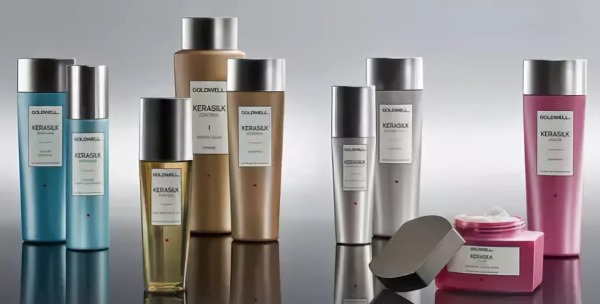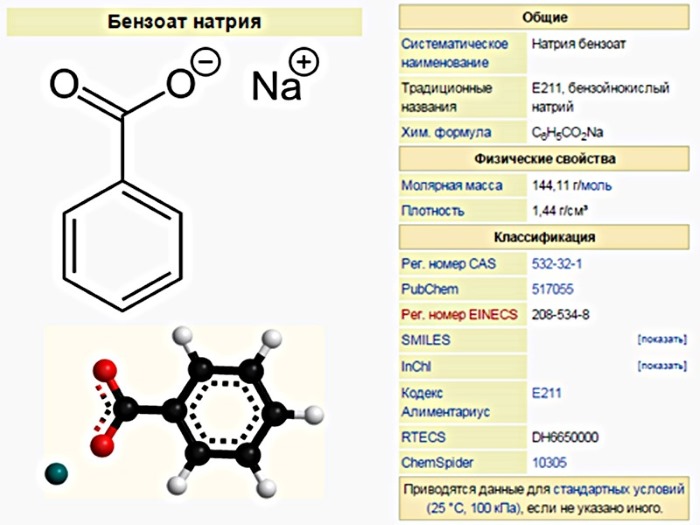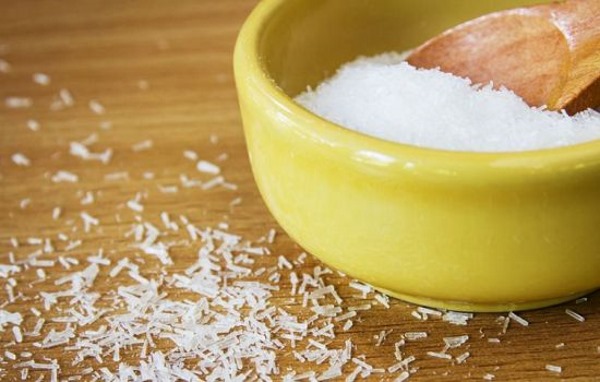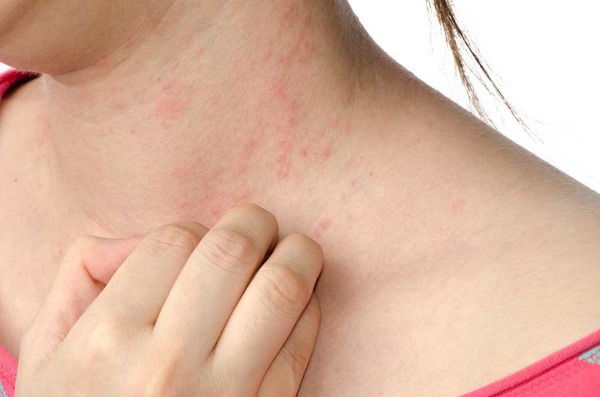Most manufacturers of cosmetics, taking into account the current trends in the development of the industry, strive to minimize the proportion of chemicals in the composition.
Nevertheless, no matter how sterile the production process is, when water is added to the composition of cosmetics, the number of harmful microorganisms increases in it. To prevent this process, chemically synthesized preservatives are used, among which sodium benzoate is the most popular.
Sodium benzoate, commonly known as E211, is one of the most inexpensive preservatives available. Visually, it is a white crystalline solid practically odorless and with a subtle sweetish aftertaste. In a dosage not exceeding the permissible dosage, sodium benzoate is considered harmless.
The breadth of its application and popularity is due to its ability to withstand high temperatures and maintain its properties in an acidic environment. Sodium benzoate is highly water soluble and non-toxic. Sodium benzoate exists in natural and artificial forms.
In nature, it is found in small doses in a huge variety of foods: in cranberries, cloves, cinnamon, allspice, apples, and prunes. Also, this component is naturally present in mustard, seafood, cheese and dairy products. It is during the fermentation of dairy products such as yogurt that some bacteria produce benzoate.
However, it is impossible to synthesize sodium benzoate from natural ingredients on an industrial scale.
In this regard, it is produced in laboratory conditions by combining sodium hydroxide or carbonate with benzoic acid. Sodium benzoate has emerged as an alternative to the expensive and dangerous salicylic acid, which has preservative properties and helps to increase the shelf life of a particular product.
Sodium benzoate works as follows:
- penetrates into the cells of the product containing it;
- changes the level of acidity in cells;
- due to a change in acidity, it complicates the fermentation of starch and fats;
- minimizes the amount of decay products that are food for pathogenic bacteria;
- in the absence of nutrition, yeast and fungi die.
However, it should be borne in mind that sodium benzoate, like any preservative, does not keep food fresh, but only provides a sufficiently toxic environment to prevent bacterial growth. Sodium benzoate is also used as a flavor enhancer, making food more appetizing and sweeter. Due to the presence in the composition of benzoic acid, E211 has an antimicrobial effect.
Sodium benzoate acts as a corrosion inhibitor, which means it helps prevent corrosion (rust) of metallic materials used in cosmetic packaging. Due to its properties and cost, sodium benzoate has found its application in many industries (Table 1). Table 1. Areas of sodium benzoate use.
| Sodium Benzoate Industry | Purpose of application |
| Food industry | To increase the shelf life of baby food, weight loss products, pet food, long-term storage products such as canned food, pickles, sauces, juices, carbonated drinks, confectionery, mayonnaise, caviar |
| Cosmetic industry | As an active ingredient and preservative in color cosmetics, body and hair care products |
| Pharmaceuticals |
|
| Tobacco production | To prevent tobacco mold from growing |
| Pyrotechnics | To get the sound effect of "screeching" in fireworks |
| Chemical industry | In the production of dyes, polypropylene, non-pesticide agricultural chemicals, coolant in cars |
| Aviation industry | In the production of anti-corrosion coatings for aluminum parts |

 Don't miss the most popular column article: Fashionable haircut for short hair. Photo, front and back views.
Don't miss the most popular column article: Fashionable haircut for short hair. Photo, front and back views.Preservative composition
Sodium benzoate preservative contains the following chemical elements:
- benzene is a product of oil refining;
- 1,4-Dioxane is a stabilizer;
- trichlorethylene;
- chloroform;
- heavy metals in an insignificant amount (0.01%).
Sodium benzoate in cosmetics
Facial and body care products, especially those that are exposed to water in the shower or sink, have a high risk of contamination from bacteria, yeast and mold spores. Also, cosmetic products, given the presence of essential oils, plant extracts and fats, without the use of preservatives, have a very short shelf life.

Spoiled products are harmful to the skin and the body as a whole. Sodium benzoate in cosmetics helps to cope with the problem of the duration of its storage, because a care product can stand on a store counter or on a dressing table for a rather long period. Even organic cosmetics contain this additive.
It allows products made from natural ingredients to be stored as much as fully synthetic substances. The benzoic acid supplement can be used as a preservative or as an active ingredient in antifungal products, foot care, hair care, and problem skin formulations.
Sodium benzoate in cosmetics is commonly used in personal care products such as hair products, baby wipes, toothpaste, and mouthwash. Sodium benzoate in cosmetics is combined with potassium sorbate, which increases their preservative properties.
As an independent sodium preservative, benzoate is added to products with an acidic environment: various hair conditioners, masks, balms.
In foaming products (shower gels, bath foams), this component is present in smaller quantities, since it reduces the formation of foam. Sodium benzoate is widely used in decorative cosmetics, the shelf life of which is quite long.
The presence of sodium benzoate in personal care products has been rated by scientists as hazard level 3 on a scale of 0 to 10. This means the overall risk of its use is relatively low.

 Don't miss the most popular column article: Fashionable haircut for medium hair. Photo, front and back views.
Don't miss the most popular column article: Fashionable haircut for medium hair. Photo, front and back views.Among the main useful cosmetic properties of sodium benzoate are the following:
- preservative effect - sodium benzoate protects the cosmetic composition from the appearance of pathogenic organisms in it that cause fungus and mold;
- anti-inflammatory action;
- antibacterial effectwhich occurs when sodium benzoate is combined with lactic acid;
- relatively low toxicity when affecting the skin;
- antifungal effect - acting as a preservative, sodium benzoate is able to cleanse the microflora not only in the cosmetic product itself, but also to rid the skin of the fungus.
The action of sodium benzoate as an active ingredient is equally effective for all skin types and for all hair types.
Sodium benzoate harm
Sodium benzoate is approved by the US Food and Drug Administration and has a GRAS (Generally Recognized Safe) rating. Many hair and cosmetic testing experts consider this ingredient to be generally harmless unless used in high enough dosages.
Nevertheless, its effect on the human body has not been fully investigated.
While some researchers believe that low doses of sodium benzoate taken by mouth or applied to the scalp, hair, or body have little effect, others believe that even small amounts can cause serious effects in those more sensitive.
If a person's health is already a concern, they are recommended as few chemicals as possible. If the problem is related to cancer, then home remedies for cleaning hair and body are recommended. However, finding products even on the shelves for healthy foods and organics without any small preservatives is not easy.
Sodium benzoate in cosmetics and food processing as an additive is prohibited in some countries. Any preservative is believed to do more harm than good.
Among the dangers associated with the use of E211, researchers highlight the following:
- Sodium benzoate inhibits the activity of enzymes that are responsible for the implementation of redox reactions in the cells of the human body.
- Allergic reactions, urticaria, dermatitis, itching, choking occur, which are especially dangerous for people suffering from asthma and allergies.
- Provokes Parkinson's disease and other diseases of the nervous system.
- It has a detrimental effect on the functioning of the liver, which is fraught with cirrhosis.
- It accumulates in the body due to the difficulties of its elimination.
- Sodium benzoate in cosmetics is often combined with ascorbic acid, resulting in the formation of the harmful carcinogen benzene. The consumption of benzene can lead to the development of cancerous tumors or a lack of hemoglobin and, as a result, to anemia. Products containing E211 and vitamin C have a low acidity level, which contributes to the rapid formation of benzene. The reaction is also accelerated by air and exposure to sunlight, because not all cosmetics are packaged in light-tight tubes.
- In combination with artificial colors, it affects the behavior of children (causes hyperactivity), the nervous system and their intellectual abilities.
- May cause attention deficit disorder. This condition is most common in children, but it can also be present in adults. Affected people may be forgetful, have difficulty concentrating and follow directions, or show impulsiveness.
- When consumed in large quantities, it has a toxic effect on the kidneys.
- Changes the structure of the DNA membrane due to the ability to penetrate into the cell. Since the DNA shell is involved in the transfer of genetic information, any change in it, and in the case of the influence of sodium benzoate, the formation of growths on it, can cause genetic disruptions. Also, scientists associate a similar effect of E211 on DNA with the emergence of a further predisposition to drug addiction, smoking and even suicidal tendencies.
- It causes rapid skin aging due to the fact that sodium benzoate destroys not only pathogenic, but also beneficial bacteria.
- Disrupts the respiratory tract as a result of the ingestion of a preservative.
- Irritates mucous membranes if the substance enters the eye.
- May cause gastrointestinal upset.
- Controls appetite by reducing the release of leptin, a hormone that suppresses appetite.
- Causes high blood pressure, which in turn increases the risk of heart disease and stroke.
- Sodium benzoate in color cosmetics contributes to the clogging of pores and the formation of acne as a result of excessive use without strict adherence to hygiene standards.
- Additional serious side effects (severe headache, fainting, blurred vision, chest pain, slow heartbeat, faintness, and slurred speech) can occur as a result of the combination of sodium benzoate and sodium phenyl acetate.
Sodium benzoate dosage
Due to the fact that sodium benzoate is present not only in food, cosmetics, but also in cigarette smoke, as well as in polluted air, it is rather difficult to determine exactly how much of this substance enters the human body. It all depends on the environmental situation, lifestyle, products used and the care products used by a particular person.
According to the studies of the International Program of Chemical Safety, the consumption of E211 in an amount not exceeding 5-8 mg / kg of body weight per day will be relatively harmless. The World Health Organization has set the Acceptable Daily Intake (ADI) for sodium benzoate at 0–2.27 mg per pound (0–5 mg per kg) of body weight.
Sodium benzoate in cosmetics should not exceed 0.3-0.5% of the total mass of the product to increase its shelf life and minimize its effect on the body. If the dosage is reduced, cosmetics can be stored for no more than a month in the refrigerator.

 Don't miss the most popular column article: Fashionable bangs of the new season for medium, short, long hair. A photo.
Don't miss the most popular column article: Fashionable bangs of the new season for medium, short, long hair. A photo.Overdose
Do not forget that the body is practically unable to excrete sodium benzoate, therefore, if possible, physicians are advised to minimize its use. Otherwise, an excessive amount of this substance can lead to overdose and negative consequences.
Symptoms of a sodium benzoate overdose include:
- nausea;
- dizziness;
- vomiting;
- stomach pain;
- swelling;
- allergic reactions (itching, redness);
- heart palpitations;
- weakness;
- light-headedness;
- trembling in the body.
As a first aid in case of an overdose of E211, it is necessary to flush the stomach and take an absorbent (for example, activated carbon). Then you need to call a doctor and for a while completely exclude the use of this preservative.
Sodium benzoate during pregnancy
Sodium benzoate is categorically contraindicated in pregnancy. However, if food products containing it can be completely excluded from the diet, then there are no hygiene products without E211. Due to its ability to change the structure of DNA, sodium benzoate can cause genetic abnormalities in a child.
At the same time, the baby's body is still being formed and is unstable to the effects of chemicals, therefore this additive can directly disrupt the construction of the immune and nervous systems.
Excessive consumption of products containing E211 can cause fetal growth retardation, as it affects the formation of various vital systems of the child's and mother's body. In addition to further neurological disorders and hyperactivity, the newborn may develop brain abnormalities. The risk of miscarriage increases in the early stages of pregnancy.
All these consequences are likely only with the abuse of products with preservatives. Today, the production of cosmetics without the use of preservatives, in particular sodium benzoate, is practically impossible.Making home care products and using them immediately to prevent the formation of fungus and other bacteria is problematic.
In this regard, a compromise is inevitable and in order to minimize the negative consequences for the body, it is necessary to choose cosmetics with a lower content of preservative.
Article design: Anna Vinnitskaya
Video about additives in cosmetics
Harmful ingredients in cosmetics:







